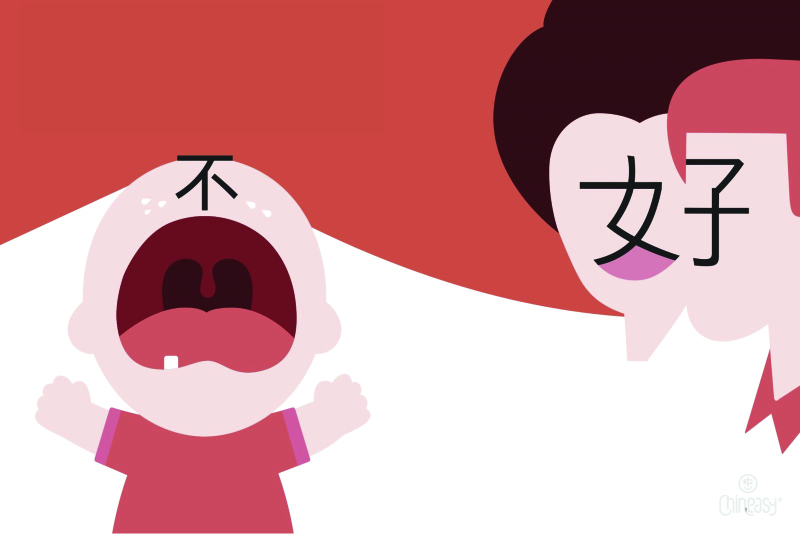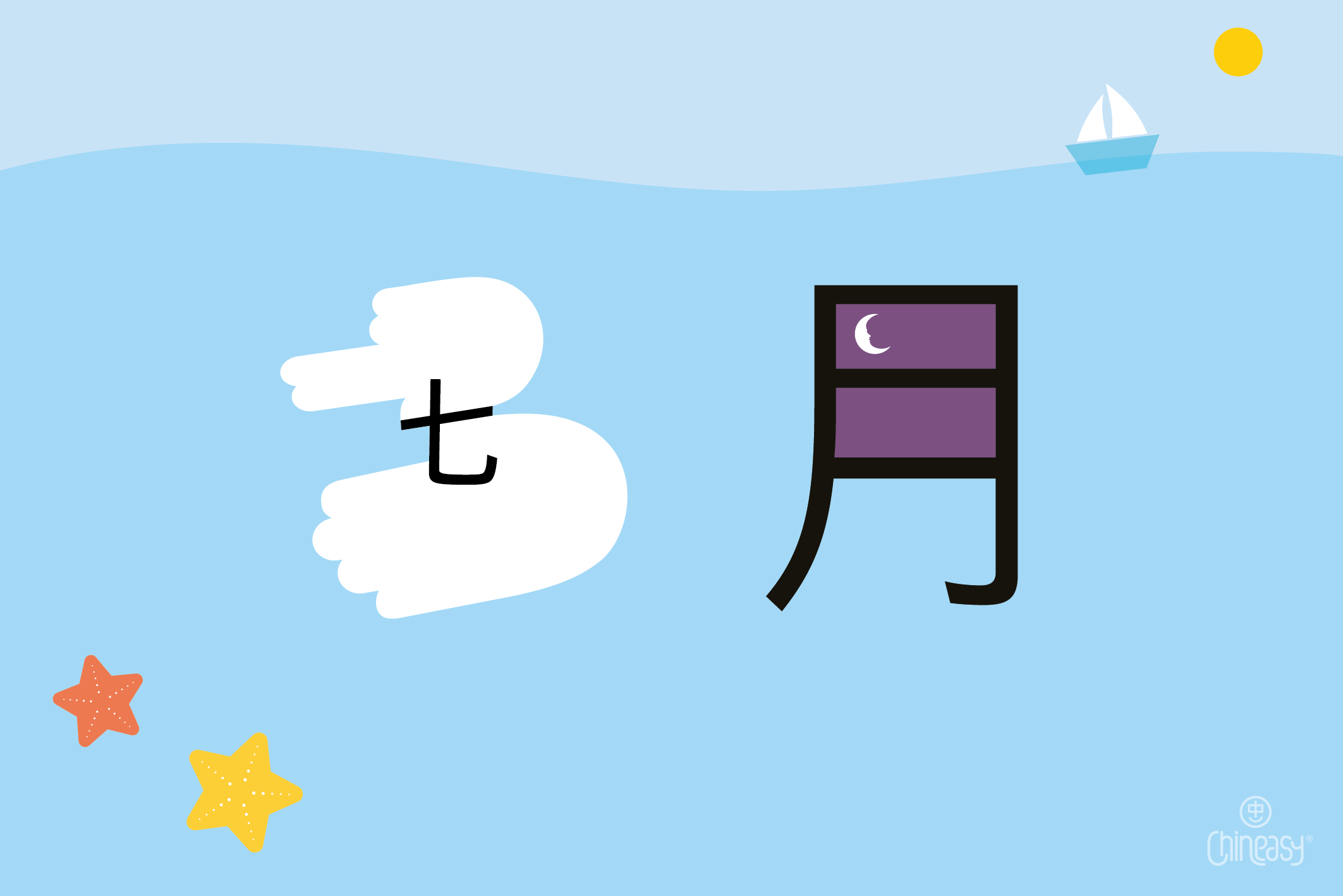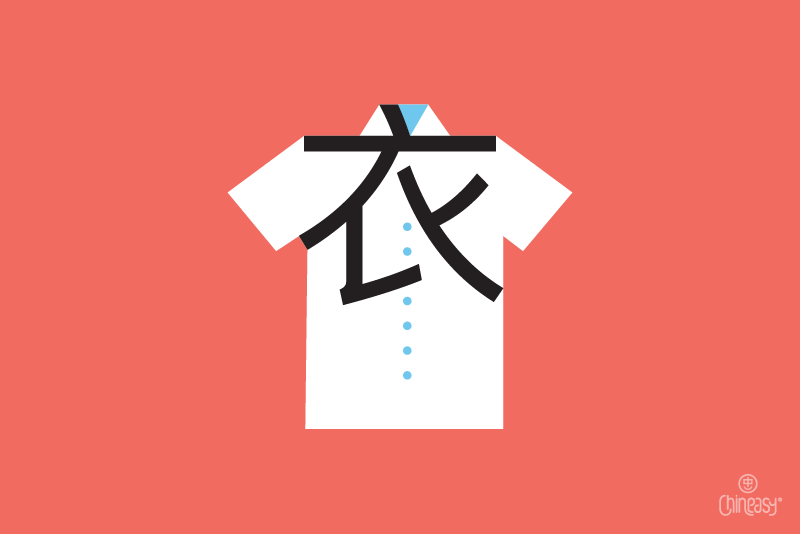Are you a cat or dog lover? It’s a heated debate.
However, not many people can deny the playfulness and cuteness of cats, especially when they’re purring, rubbing against their owners, and curling up on their laps.
The soothing presence of a cat, coupled with its gentle purring, can have a calming effect on people. Interacting with feline companions has been shown to reduce stress levels and promote relaxation.
Whether you’re already a cat owner or considering becoming one, knowing about different cat breeds can enhance the bond you share with these adorable creatures.
In this post, we’ll show you how to refer to five beloved cat breeds in Chinese.
Orange cat 橘貓/橘猫
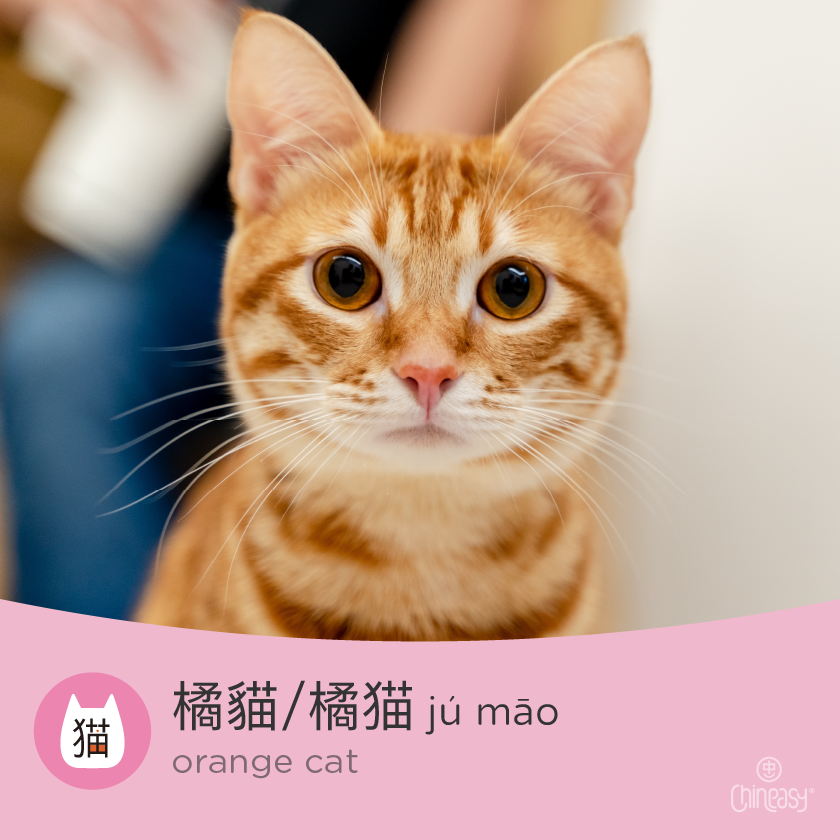
Orange cats are translated to 橘貓 (in traditional Chinese) or 橘猫 (in simplified Chinese), pronounced as “jú māo.” The first character, 橘, means “orange” or “tangerine,” and the second character, 貓/猫, means “cat.”
It’s worth noting that the term doesn’t refer to a specific breed but rather a coat color or pattern found in various cat breeds, such as the American Shorthair.
So, when you hear the term either in Chinese or English, think of them as cats with orange-ish fur.
Interestingly, orange cats are more commonly male, making female orange cats relatively rarer.
While no general personality traits are exclusive to orange cats, many owners describe them as affectionate, outgoing, and friendly. A study has found that their social behaviors may be linked to their coat color.
Orange cats are also one of the most beloved feline companions in China!
Persian cat 波斯貓/波斯猫
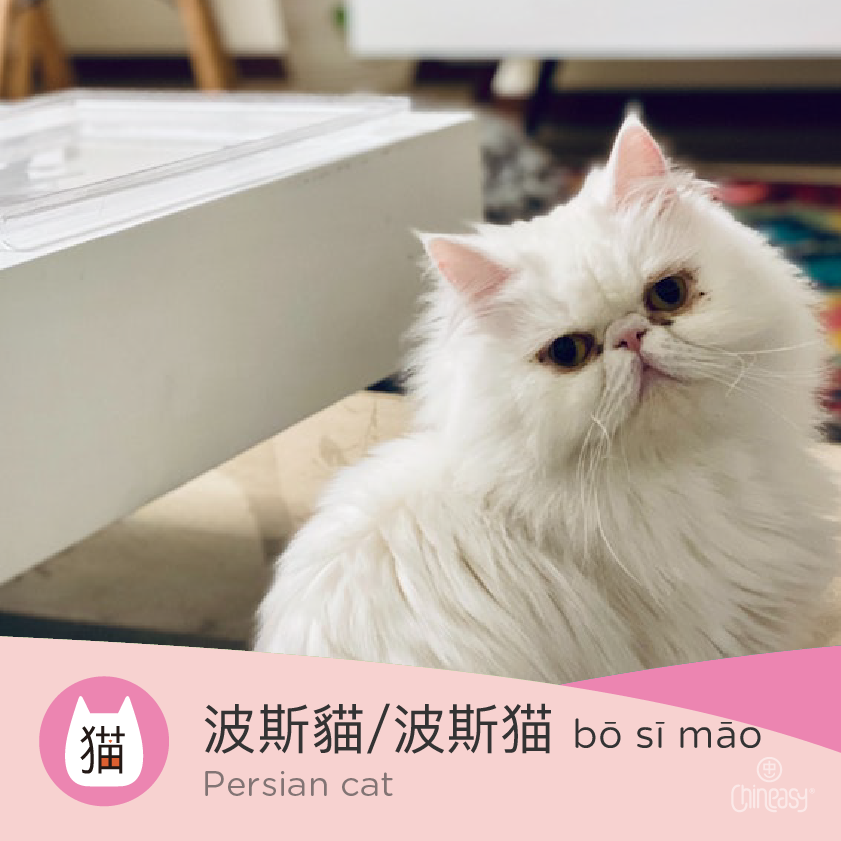
The first two characters, 波斯, are a loanword from the English word “Persian,” and you have already learned that 貓/猫 means cat. Together, 波斯貓/波斯猫 (bō sī māo) is the Chinese name for “Persian cat.”
This breed, one of the oldest and most popular worldwide, is renowned for its long, luxurious, and dense coats, which require regular grooming to prevent matting and keep them in good condition.
Another hallmark of this breed is their flat and pushed-in facial structure.
When it comes to personality, Persian cats are typically laid-back and savor a relaxed lifestyle. They are not excessively vocal and are admired for their serene nature.
Preferring to lounge, they cherish quality time with their owners over intense physical activities.
Ragdoll 布偶貓/布偶猫
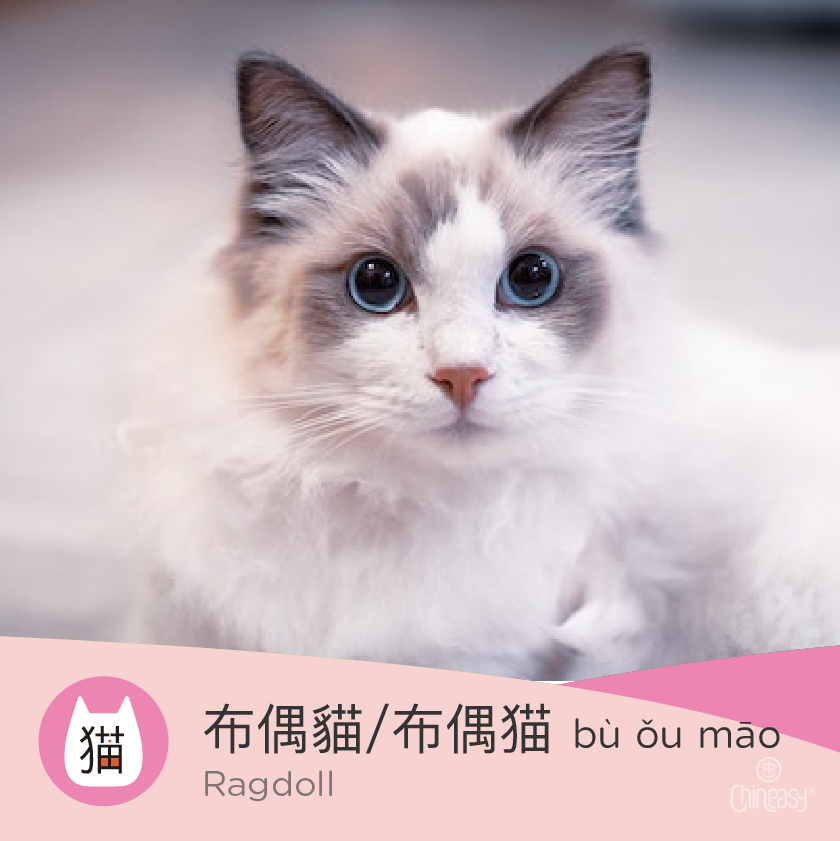
The Chinese term 布偶貓/布偶猫 (bù ǒu māo) literally translates to “cloth idol cat,” mirroring the English name’s connotation of a “rag” and “doll.”
True to their name, Ragdolls are famous for their unique characteristic of going limp when picked up, just like a ragdoll.
Due to their gentle, docile, and playful nature, Ragdolls are cherished and adored by cat lovers worldwide. They are sociable and tend to get along well with families and other pets, making them an excellent choice for households.
In terms of physical characteristics, they are relatively large and muscular, boasting a semi-long, silky coat.
Their striking blue eyes are a standout feature and come in various colors and patterns.
Scottish Fold 摺耳貓/折耳猫
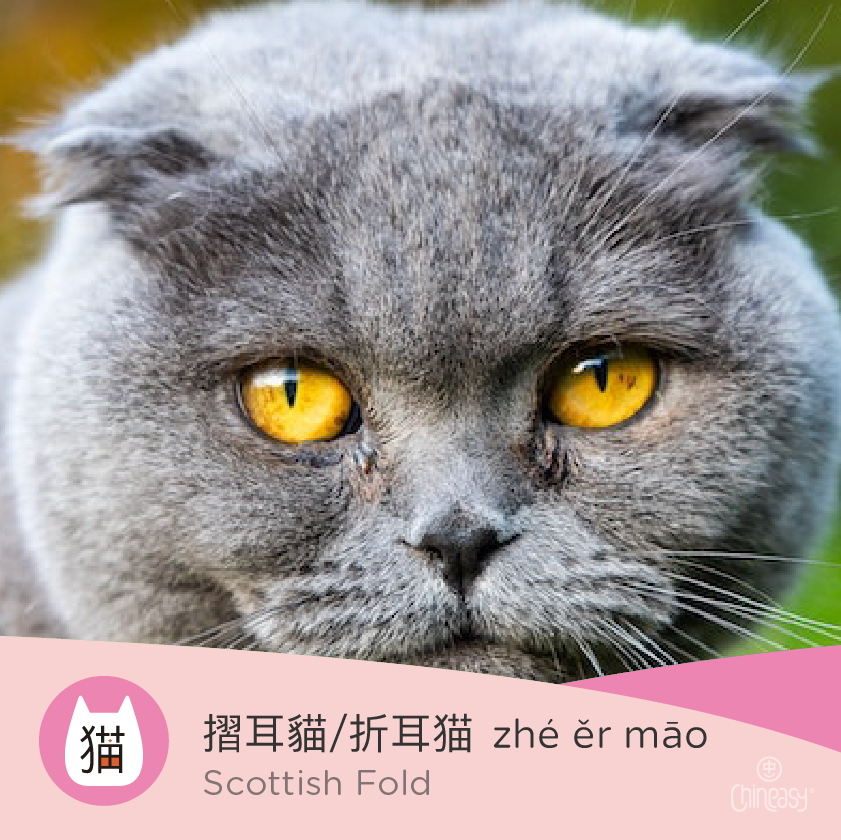
Based on its name, you might be able to guess the country of origin of this breed!
The Scottish Fold originates from Scotland, hence the word “Scottish” in its name. The word “Fold” refers to a unique fold in their ears that sets them apart from other cat breeds.
Their Chinese name 摺耳貓/折耳猫 (zhé ěr māo) emphasizes this distinctive physical feature. 摺/折 means “to fold, to bend” or “curved,” and 耳 means “ear.” So, the Chinese name literally translates to “curved ear cat” without any mention of “Scotland” or “Scottish.”
Scottish Folds are medium-sized cats with round faces and big, round eyes, usually with an “owl-like” appearance.
As for their temperament, they are known for being friendly and sociable, often seeking human interaction.
Interestingly, despite their name, not all Scottish Folds have folded ears – some have straight ears but still carry the gene for folded ears.
Maine Coon 緬因貓/缅因猫
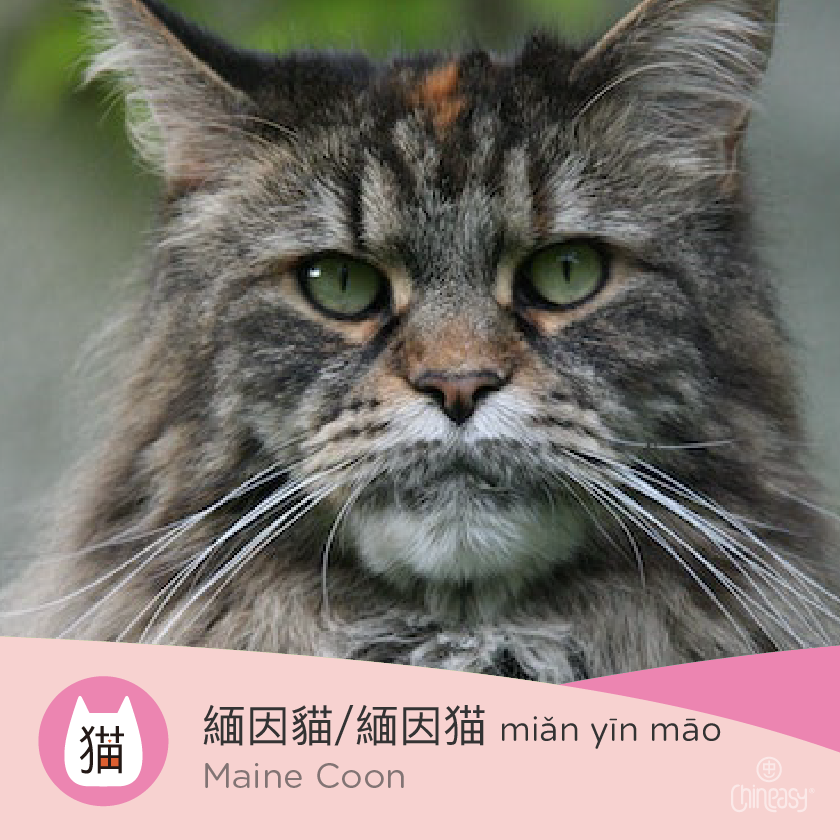
Like the Scottish Fold, the Maine Coon breed derives its name from its place of origin. “Maine” refers to a state in the northeastern region of the United States.
Although the “Coon” in the breed’s name was initially believed to be related to raccoons, scientific evidence has debunked this theory. However, the Maine Coon’s thick, striped tail bears a striking resemblance to that of a raccoon.
In Chinese, the breed is known as 緬因貓/缅因猫 (miǎn yīn māo), which only emphasizes its place of origin 緬因/缅因, a phonetic transliteration of “Maine.” Interestingly, the Chinese term does not include a translation for “Coon.”
Maine Coons are one of the largest domestic cat breeds. They have a sturdy, muscular build, with males often weighing between 13 to 18 pounds (5.9 to 8.2 kg) and some individuals even surpassing 20 pounds (9 kg).
They are distinctive for their large, tufted ears, thick, water-resistant fur, and bushy tails. Often referred to as “gentle giants,” they are known for their gentle, affectionate nature, as well as their intelligence and playful personality.
Although their thick coat might seem high-maintenance, it is surprisingly easy to care for and requires regular but not overly frequent grooming.
And there you have it – a brief introduction to five popular cat breeds known and loved in China and around the world!
Whether you’re a fan of the vibrant 橘貓/橘猫, the luxurious 波斯貓/波斯猫, the gentle 布偶貓/布偶猫, the unique 摺耳貓/折耳猫, or the majestic 緬因貓/缅因猫, each breed offers its own set of charming features and delightful quirks.
Now, not only can you recognize these fantastic felines, but you can also discuss them in Mandarin Chinese. In the captivating world of cats, there’s always something new to discover and learn. As always, stay “pawsitive,” cat lovers!
